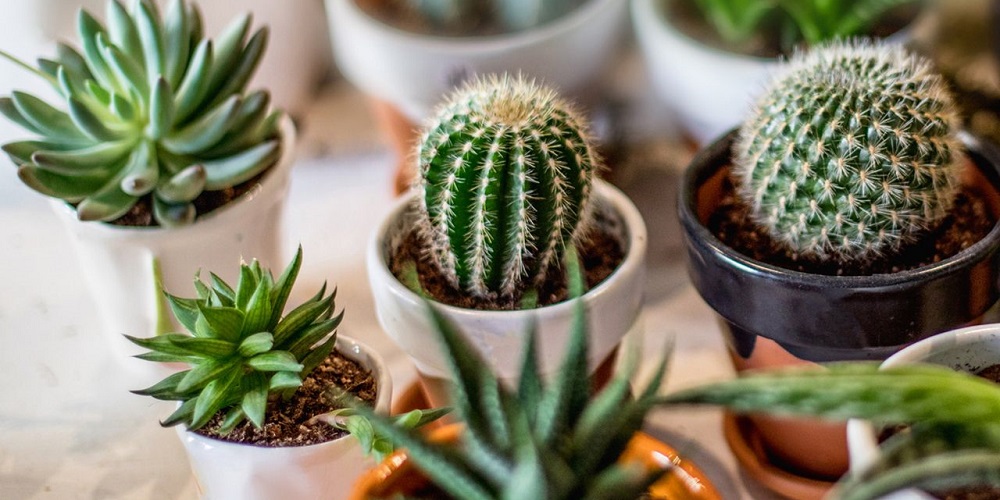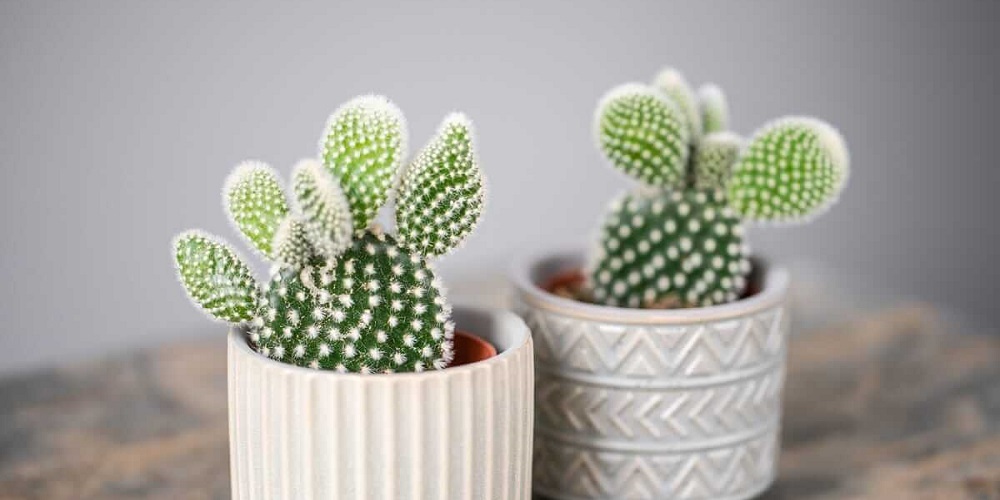How often is a cactus watered?

Although cacti and succulents are one of the plants that require the least care, this does not mean that we can abandon them to their fate without ending up dying. That is why it is convenient to know how to take care of a cactus and how often we must carry out some vital operations for its survival, such as irrigation or fertilization.
Cacti are one of the toughest plants we have at our disposal. These species hardly need watering or special care, in addition to being able to adequately withstand the most complex climatic conditions, especially in very hot environments. However, this does not mean that we can put aside the care of the cactus after having planted it and expect it to survive without our attention. Something that many people who do not know how to care for a cactus properly think.
To avoid this end, there are certain operations that we must carry out frequently such as irrigation, fertilization or even transplanting of the cacti, in case they are in a pot and grow more than the container supports.
If you are not sure how to start or you do not know how often to water a cactus or what fertilizer to add to the soil of your cacti, all you have to do is continue reading this article, where we clarify the main doubts regarding the care of these plants.
When to water a cactus
One of the questions that arouses the most doubts regarding these plants is knowing when to water the cacti. To answer it, we will start by dividing the plants according to their location, since the care of cacti in pots differs from those planted outdoors.
Starting with cacti in pots, the general recommendation is that the risk be carried out every fifteen days during the spring and autumn, while during the summer it will be necessary to water every time we see that the substrate is dry and, as a reference, once a week. This watering should be more frequent if the cacti are planted in clay pots, since these tend to lose moisture more quickly than plastic pots.

It is also important that, when growing these small cacti, the soil has good drainage and that we do not place the classic saucer under the pot. This accumulation of water can end up rotting the roots of the plant.
Regarding outdoor cacti, irrigation will depend on the weather conditions of the environment. If during the autumn and spring it usually rains with some frequency, it will not be necessary to do any irrigation. Otherwise, it is usually enough to water once every two weeks, although as long as the temperature does not drop below 10 degrees. Precisely for this reason, during the winter the cacti should hardly be watered, unless we see that they become withered. As for the summer, the general recommendation is to water them every week or week and a half, depending on the amount of sunlight they receive.
In all the cases that we have mentioned, when it comes to watering cacti it is important that we do not go overboard with the amount of water and that, if we have doubts when it comes to watering or not, we refrain from doing so. It will always be easier to correct the lack of irrigation and reactivate a somewhat withered cactus than to heal a cactus with rotten areas due to excess water.
The cactus subscriber
Another vital element for the good health of any cactus is fertilizer. Let us think that these types of plants tend to exhaust the substrate in a short time, due to their growth mode and the washing generated in the soil by irrigation. Therefore, it is key to use a fertilizer for cacti that is suitable for the species that we are growing, in order to recover that soil and keep the plant in a healthy environment.
In general, the fertilization process should begin when we see that the cacti begin to grow, which is manifested in details such as the presence of new shoots. From the beginning of spring until autumn arrives, we will fertilize the plant once a month, ceasing the fertilization process during the winter.
Regarding the product to be used, in general the fertilizer that dissolves directly in the irrigation water is usually better than those that have a granular presentation and are poured on the ground. If we take a look at the market, we will see products that are suitable for all types of indoor and even outdoor cacti. And it is that the needs of the different species of cacti and succulent plants have been the same, so it is not usually necessary to resort to very specific products.

Other care
As a last section, we want to mention some important care for the cactus, beyond irrigation and fertilizer. One of them is pests. Cacti, due to their characteristics, are a very appetizing snack for mealybugs. Its presence is perceived in the form of grayish grit or white cotton balls, present both on the flat walls and near the spikes. If you notice their presence, simply spray a suitable product against these pests to eliminate them.
Regarding pruning, it is not necessary for the cactus. Only in the event that the plant has a broken or diseased part should we remove it, making a straight cut from the affected area, preferably during the summer.
As for transplants, cacti prefer small spaces. If you have a potted cactus, you can hurry it up until you see that it is too small for the size of the plant. It is key that when carrying out the transplant you use quality soil with adequate drainage.
Finally, we do not want to forget about cactus fruits. Among them, we have the dragon fruit, similar to an artichoke, the garambullo, similar in size to a cherry, or the famous prickly pears. From these fruits we can obtain the best vitamin C for our diet, of high quality and with a very interesting flavor. However, it is vital that before eating any of these fruits you verify that the plant produces edible fruits and that you take all the necessary measures to eliminate the spikes and other dangerous elements that these fruits usually have in their structure.

![Photo of Tree of Love: [Cultivation, Irrigation, Care, Pests and Diseases]](https://www.complete-gardening.com/wp-content/uploads/2022/08/tree-of-love-cultivation-irrigation-care-pests-and-diseases-390x220.jpg)

![Photo of Gardenia Care: [Earth, Strengthening, Humidity and Pruning]](https://www.complete-gardening.com/wp-content/uploads/2022/08/gardenia-care-earth-strengthening-humidity-and-pruning-390x220.jpg)
